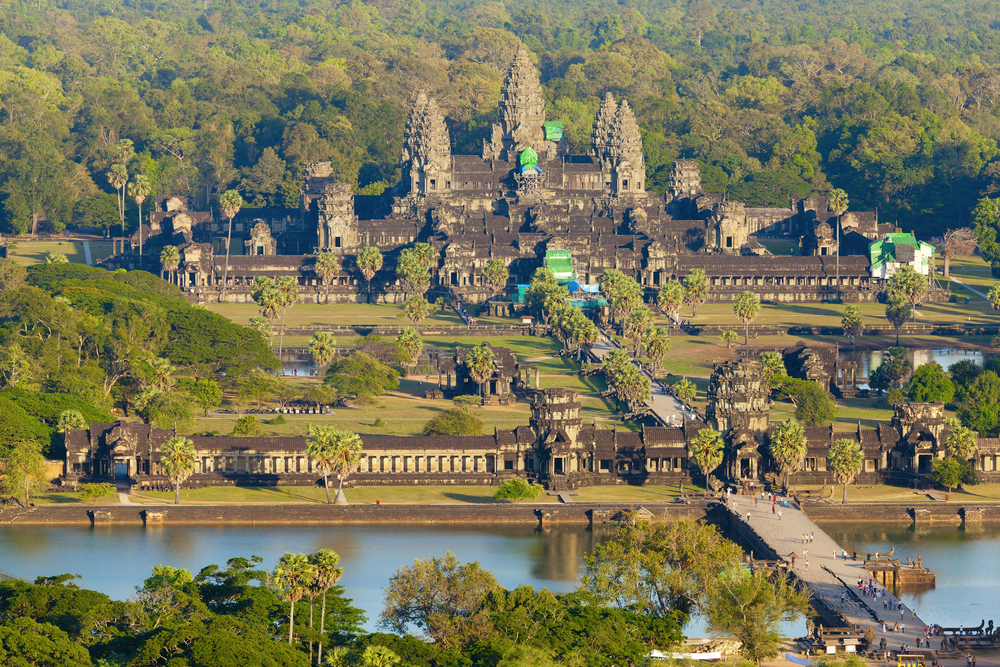

The majestic temple complex of Angkor Wat stands as the most iconic landmark in Cambodia and is a testament to the country's historical significance. Built during the first half of the 12th century by King Suryavarman II, Angkor Wat was initially dedicated to the Hindu god Vishnu before transitioning into a Buddhist site. Its architectural grandeur and spiritual significance have made it a critical element of Cambodia's national identity and an enduring symbol of Khmer ingenuity.
The narrative of tourism in Angkor Wat began in the 19th century when French explorers, such as Henri Mouhot, publicized the ruins to the Western world. It wasn't until Cambodia came under French colonial rule that Angkor Wat started to gain international attention, leading to a modest influx of tourists eager to encounter its mystical allure firsthand. The French designed a basic infrastructure to facilitate access, including the establishment of the conservation organization Ecole Française d'Extrême-Orient (EFEO) which played an essential role in the research and restoration of the temples.
In the mid-20th century, as Cambodia gained independence, Angore Wat and the surrounding temple complexes became an official tourist destination. Prominent figures like Jacqueline Kennedy visited Cambodia in 1967, further establishing its appeal to an international audience. However, the growth of tourism was abruptly stalled by the onset of civil war and the brutal regime of the Khmer Rouge in the 1970s.
Following the stabilization of Cambodia under a United Nations-sponsored government in the 1990s, Angkor Wat started to enjoy renewed interests from travelers around the globe. In 1992, UNESCO designated Angkor as a World Heritage site, bolstering its profile on the world stage and sparking substantial growth in tourism. This recognition prompted a rise in international and domestic efforts to preserve the temples and develop tourism sustainably.
In recent years, Angkor Wat has experienced an unprecedented tourism boom. The complex now receives millions of visitors each year, drawn to its ancient beauty and the rich culture of the nearby town of Siem Reap. Siem Reap has thus transformed into a bustling tourist hub, adorned with hotels, restaurants, and entertainment options catering to a diverse array of tastes and budgets.
The latest trends in tourism at Angkor Wat reflect a shift towards sustainability and responsible travel. There is an increasing awareness of the need to preserve this monumental site's integrity for future generations. Visitors are encouraged to abide by a code of conduct that promotes respect for the sacred sites and cultural traditions.
Innovative approaches to tourism are also emerging. In response to the global pandemic, Angkor introduced virtual tours to cater to international audiences unable to travel. Another trend is the focus on experiential travel, where visitors engage in personalized experiences like photography tours at sunrise, local culinary classes, and bicycle rides through the sprawling temple complexes.
As the tourism industry continues to evolve in the wake of global events and changing traveler preferences, Angkor Wat stands resilient as an eternal beacon of Cambodia's past and an ever-adapting monument in the face of the future.